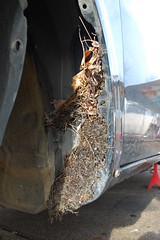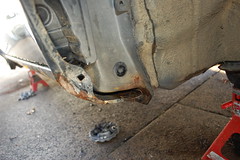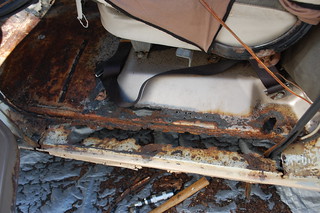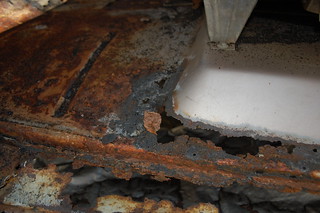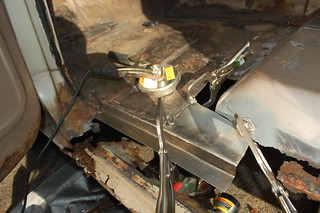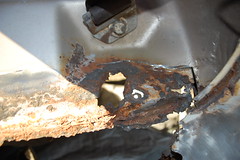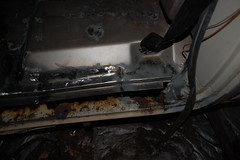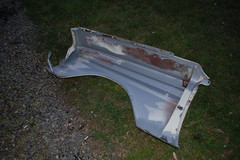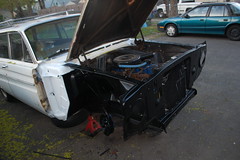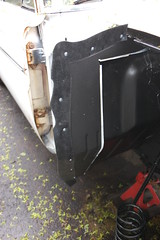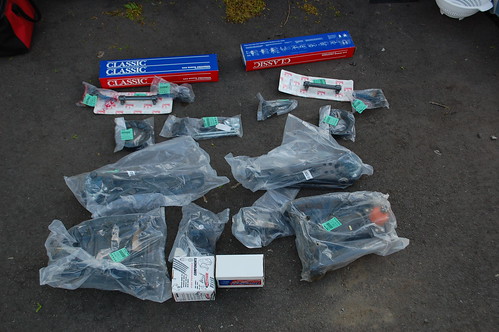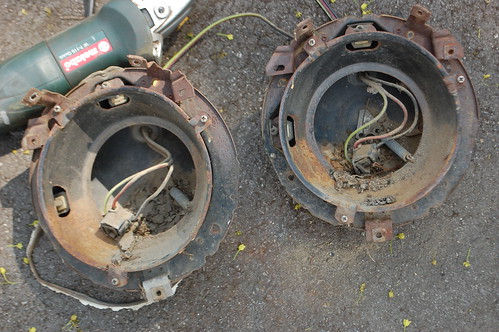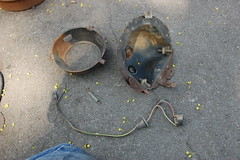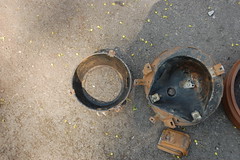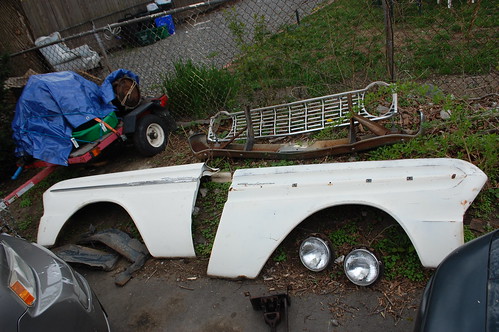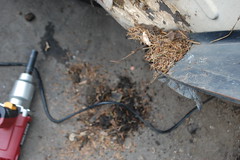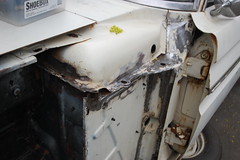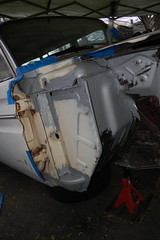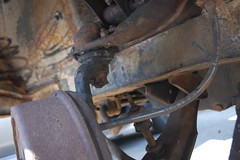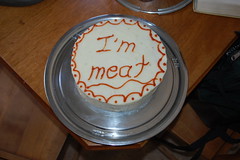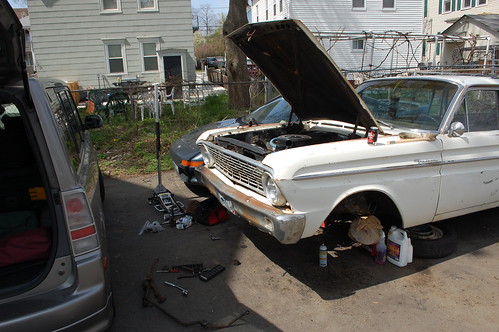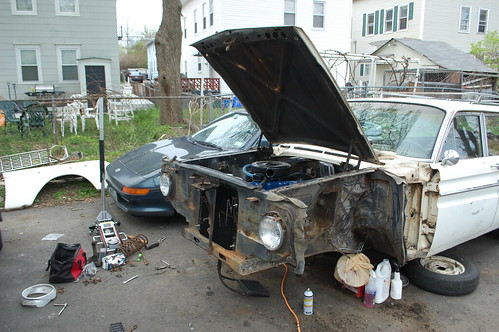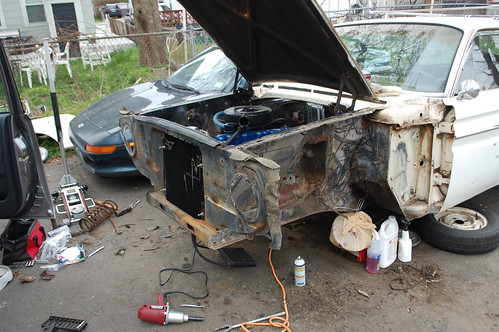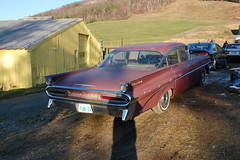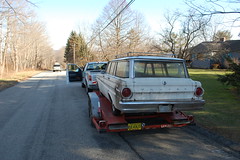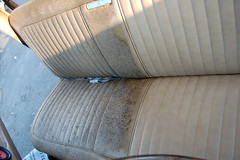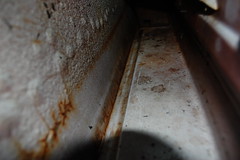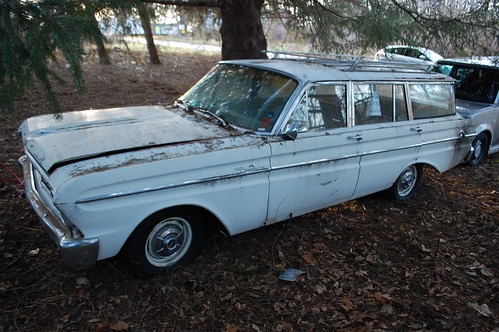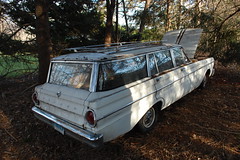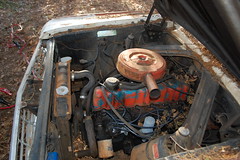(pics/work is from mid-december)
Pulling the wheels off, I started getting a more detailed look at the condition of the beater box. There was a lot of dirt & sand all over the undercarriage, when I pulled the fender liners, I found a large supply of compost stuck in the fender wells. Fortunately some quality time with the pressure washer returned the driver’s side to factory condition.
 I wasn’t so lucky on the passenger side, there was a lot more dirt & mud on this side, and is was wet, which is a bad sign. The bottom corner of the fender was also bashed pretty good, exposing the metal, which had rusted. The pressure washer didn’t help, exposing surface rust on the inside panel.
I wasn’t so lucky on the passenger side, there was a lot more dirt & mud on this side, and is was wet, which is a bad sign. The bottom corner of the fender was also bashed pretty good, exposing the metal, which had rusted. The pressure washer didn’t help, exposing surface rust on the inside panel.
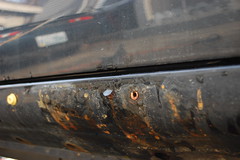 The rocker in this area on the passenger side was similarly sketchy, with a lot of rust under the paint. At this point I started getting really nervous, as the car had been free of rust except for some surface rust prior to finding this. So I broken out the angle grinder and got started stripping the paint.
The rocker in this area on the passenger side was similarly sketchy, with a lot of rust under the paint. At this point I started getting really nervous, as the car had been free of rust except for some surface rust prior to finding this. So I broken out the angle grinder and got started stripping the paint.
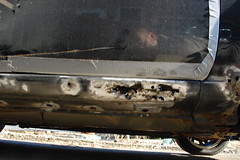 What I found wasn’t good at all. The rocker was barely there, with a big chunk being nothing but lacy rust. The fender bottom was also rotted out. The fender is a lot cause, given the other dents all over it, so I sealed the rust and will be looking for a good replacement fender. The rocker however would need significant rust repair.
What I found wasn’t good at all. The rocker was barely there, with a big chunk being nothing but lacy rust. The fender bottom was also rotted out. The fender is a lot cause, given the other dents all over it, so I sealed the rust and will be looking for a good replacement fender. The rocker however would need significant rust repair.
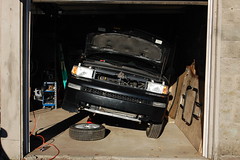 So the beater box was moved into the garage and propped up so I could get at the rocker. About this time the temperature plummeted, so the work ended up being stretched out over the next month a few hours at time on evenings when it was warm enough that by heater could keep up and the garage could get up into the 30s or 40s.
So the beater box was moved into the garage and propped up so I could get at the rocker. About this time the temperature plummeted, so the work ended up being stretched out over the next month a few hours at time on evenings when it was warm enough that by heater could keep up and the garage could get up into the 30s or 40s.
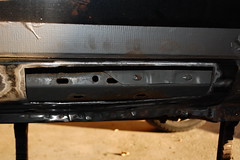 I was lucky in that the rust wasn’t in the torque boxes, so I started cutting out the rotted sections in preparation for welding in patches. I welded in a patch, only to have the edges blow out because the surrounding metal was thin & rusted. I kept cutting out more sections and welding in more patches and every time the edge would blow out again.
I was lucky in that the rust wasn’t in the torque boxes, so I started cutting out the rotted sections in preparation for welding in patches. I welded in a patch, only to have the edges blow out because the surrounding metal was thin & rusted. I kept cutting out more sections and welding in more patches and every time the edge would blow out again.
 I finally gave up and cut the entire next section out of the rocker so I new I was back to good metal. This turned out to to be a very good idea, as the metal that looked solid was actually pretty perforated. I then welded up the new hole, which went far better with good metal to weld to.
I finally gave up and cut the entire next section out of the rocker so I new I was back to good metal. This turned out to to be a very good idea, as the metal that looked solid was actually pretty perforated. I then welded up the new hole, which went far better with good metal to weld to.
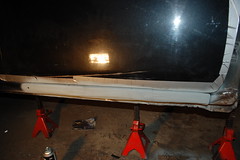 The patches went in ok, though they are a bit ugly due to my hap-hazard repairs. Fortunately they will be hidden once the rocker molding is back on.
The patches went in ok, though they are a bit ugly due to my hap-hazard repairs. Fortunately they will be hidden once the rocker molding is back on.


